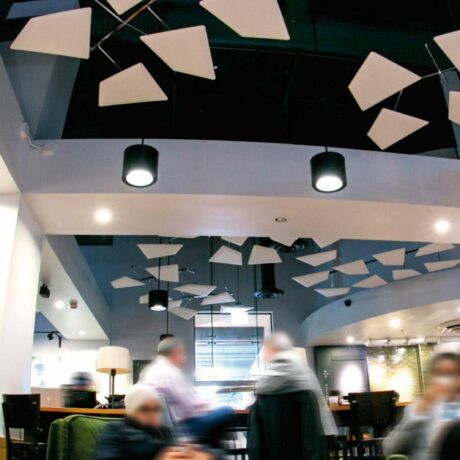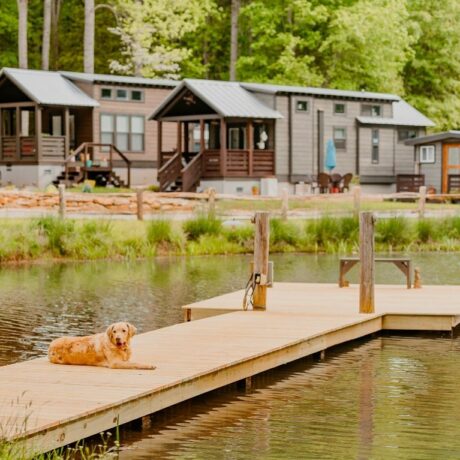
We were designed to live in harmony with our environment. We require clean air, drinkable water and light to thrive. We also require shelter, driving us to create buildings around us that serve to protect us from harm. These buildings are our caretakers, offering cooler temperatures in the summer, warmer temperatures in the winter and helping meet our basic needs for growth. Now, through an evolving and mounting evidence base, we know that the extent of our relationship with our environments goes much further. We know how to create spaces that protect us from that which can make us sick, promote practices that can keep us well, and facilitate opportunities for us to connect with one another and live our lives to the fullest.
That has been the mission behind the International WELL Building Institute (IWBI) and its WELL Building Standard (WELL), the first to be focused exclusively on the ways that buildings, and everything in them, can generally enhance, not compromise, our health and wellness. WELL provides a framework for designing spaces that put people – their health, productivity and happiness – first. This includes lighting that supports our circadian systems for a better night’s sleep and measuring various attributes of air quality, from VOCs to particulate matter.
Through comprehensive rigor and years of research, WELL provides clear guidance for leaders who value verified performance when the health and wellness of the people we care about is at stake. A testament to its rigorous and value driven approach, WELL has scaled quickly. Since its inception in 2014, WELL has grown to encompass nearly 1,000 projects totaling 175 million square feet across 34 countries. And that demand is growing. From offices to schools, homes to supermarkets, interest in applying health and well-being best practices is rising.
Rick Fedrizzi, the founder and immediate past CEO of the USGBC and current CEO of IWBI, calls this the second wave of sustainability. And to truly ride this wave to full market transformation, we have to change not just the spaces in which people live, work, and play, but also the mindsets of consumers along the way. In my work at the U.S. Green Building Council (USGBC) as the Founding Director of the Center for Green Schools over the last decade, one of the things I found most challenging was empowering consumers to ask for what they need to become their most productive, engaged, and happy selves – to demand healthier schools from their schoolboards, healthier homes from their realtors, and healthier workplaces from their employers.
What we learned along the way was that we could open more minds by opening hearts and fostering conversations that centered around high-performing children rather than high-performing buildings. We know that intellectual agreement alone won’t bring about this transformation. In order to shift behavior and practice we have to find new ways to personalize the conversation.
Now, new innovations and increased awareness promise to turn this second wave into a possible tsunami. This shift in demand is in part tied to a shift in generational needs. Companies seek to recruit the best and the brightest, and the next generation workforce is looking for something very different in their work environment and in the organizations that they choose to work for. These candidates want more than just a healthy paycheck and something to put on their resume. They want to work for an organization that aligns with their values and supports them as a whole person. Almost nine in 10 millennials believe that the success of a business should be measured in terms of more than just its financial performance (2017 Deloitte Millennial Survey).
Baby boomers are increasingly faced with decisions regarding late life care of their parents while making plans for their own retirements. This generation too has different demands and expectations for how and where to live than those of the generation before. Increasingly, safety and health-focused design features have become a priority in assisted and independent living facilities. Just as millennials are shifting expectations for the design and operation of commercial offices, an older generation is shifting expectations in multifamily residential housing.
Architects and designers have always been caretakers, ensuring that buildings are designed to prevent injury and ensure the occupants safety. The WELL framework promotes new ways that architects and designers can contribute to an organization’s commitment to health and wellness. These shifts in workplace design and workplace policies have led to the emersion of a new caretaker role within organizations: The Chief Wellness Officer. In some offices this new role emerges out of human resources, while in others out of facilities management. Increasingly, these workplace wellness officers are becoming WELL Accredited Professionals as an indication of their enterprise knowledge across WELL’s ten Concepts. There are now over 5,000 people pursuing their WELL AP credential across 73 countries.
Driving acceleration even further is the continued commitment from the first WELL projects. When building owners, corporate tenants and residential landlords implement health and wellness policies, they don’t do so at a building scale, they do so across the entire organization. Employees in New York are going to demand the same health and wellness benefits as those in Chicago and anywhere else. That’s why global companies like CBRE, HKS and TD Bank – to name a few – are pursuing WELL for multiple projects across their portfolio. IWBI has found that many companies pilot WELL in one building, and then move to scale. This approach has prompted IWBI to launch WELL Portfolio, a streamlined approach for companies pursuing WELL for multiple buildings.
According to the Global Wellness Institute, wellness is now a $3.7 trillion industry, and through optimized policy and informed real estate decisions, we have a tremendous opportunity to bring health and wellness to our businesses, our employees, our tenants and occupants at scale, positively affecting the lives of millions across the globe.
You can learn more about becoming a WELL AP and bringing health and wellness to the forefront of your organization or access the WELL Building Standard and start a project that puts people first at wellcertified.com.

Credit for picture: Arup Boston, WELL Certified at the Gold level




